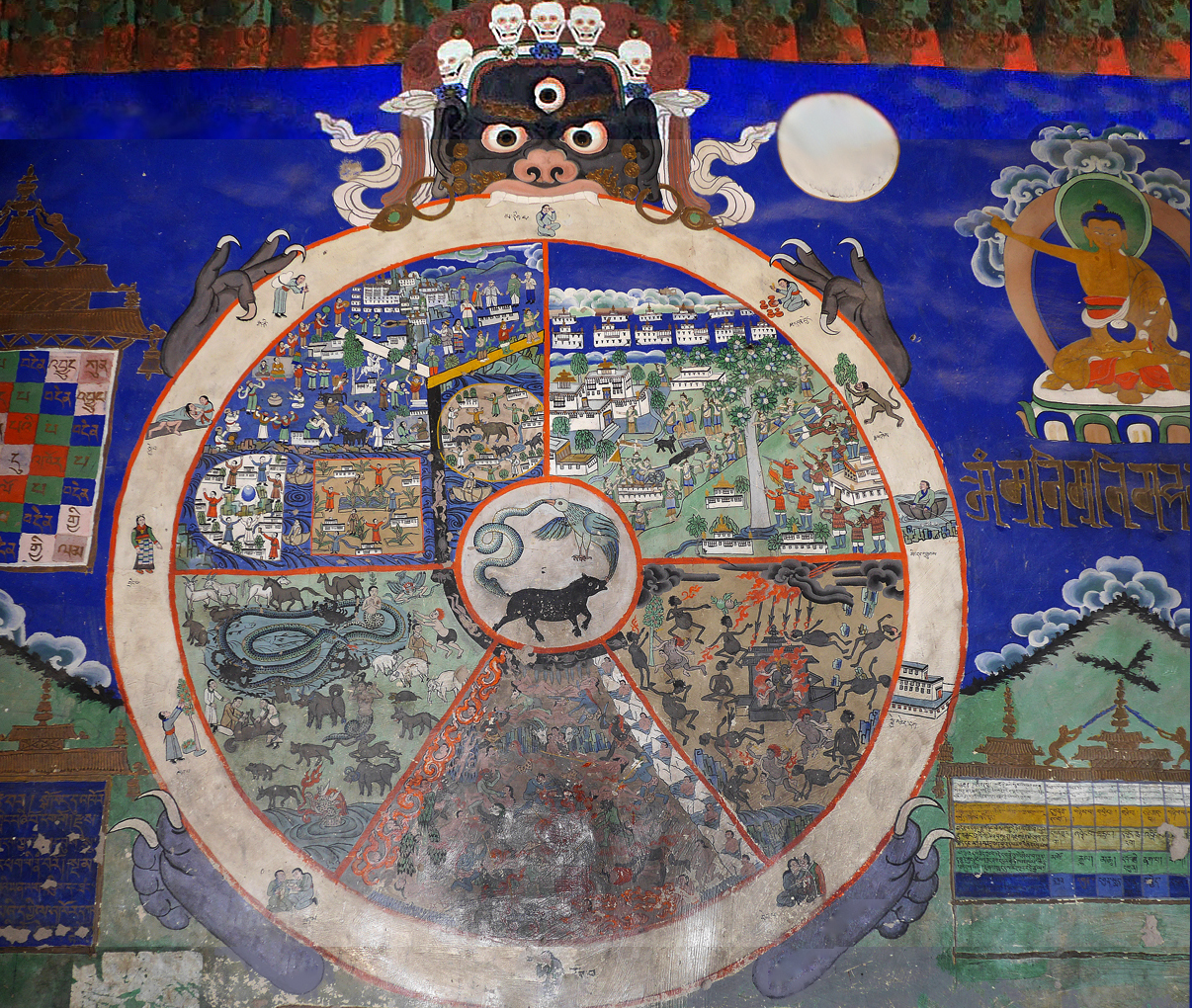Tibetan Traditions and Mystics – an overview
In Tibet, due to its natural isolation, the ancient traditions have been changed and modified by external influences far less than more accessible regions until recently. Like many other Central Asian people, the original inhabitants of the land north of the Himalayas practiced animism and shamanism. The first known Tibetan Buddha, Tonpa Shenrab Miwoche, transformed Bön, the original Tibetan form of shamanism, into Yungdrung Bön, which is still practiced today. While on this earth, Shenrab Miwo taught many different classes of beings, giving teachings suited to their various capacities. He taught beings how to calm their immediate sufferings and obtain provisional benefits through the methods of Causal Bön as well as showing the way to ultimate realization through the methods of Sutra, Tantra and Dzogchen. (Dmitry Ermakov, Bö and Bön).
Through Padma Sambhava Buddhism was introduced in Tibet in the 8th century CE and the Nyingma (literally meaning “ancient”) tradition was established based on his teachings. His consort Yeshe Tsogyal, who is regarded by many as the mother of Tibetan Budhhism, and the semi-mythical Garab Dorje, who, according to Buddhist sources, was the first Dzogchen (The Great Perfection) teacher, also contributed to the founding of the Nyingma tradition.
In the following centuries various schools of Vajrayana Buddhism developed in mutual exchange with original Bön and Yungdrung Bön, sometimes alongside each other and sometimes in tight competition. The four main Buddhist schools are Nyingma, Sakya, Kagyu and Gelug.
The Gelugpas (yellow hats) are the biggest of the four main schools. The principles of the Gelug tradition were laid out by Atisha, but the tradition was named and found by Je Tsongkhapa, a Buddhist monk and yogi. Dalai Lama is a title given by the Tibetan people to the foremost spiritual leader of the Gelug. Additionally he has been often heading the Tibetan government. The current Dalai Lama, also known as Tenzin Gyatso, stepped down as the political leader of Tibet in 2011. Another important leader of the Gelugpas is the Panchen Lama.
The Kagyu tradition originated from the teachings of Tilopa, Naropa, Marpa and Milarepa. An important leader of the Kagyus and Tibet’s first consciously incarnating lama is the Karmapa.
Within each of these schools there are various subschools and most of them contain various lineages of Tibetan mystics, called Tulkus and Rinpoches, who have been incarnating throughout the centuries. Here is a schematic presentation of the origin of the four major traditions and other prominent schools:

Graphic by Moonsell, CC BY-SA 3.0 via Wikimedia
Today there are about 500 lineages originating from Bön and Tibetan Buddhism. In relation to the relatively small population an extraordinarily high number of mystics and yogis have emerged from Tibet and the adjacent areas Ladakh, Nepal, Bhutan, Sikkim, Tuva and Mongolia. Due to the Chinese invasion and subsequent occupation of their homeland many Rinpoches or Tulkus, were exiled and started spreading Tibetan mysticism since the 1950s around the world. Many retreat and meditation centers have been established in Europe and North America.
All schools and lineages share the colorful and deeply symbolic style of artwork, which can be found in temples and monasteries, as sculptures or Thangkas. These religious paintings represent mostly deities or mandalas triggering a contemplative space for the viewer. A famous example is the Kalachakra Mandala, the “wheel of time”. It depicts a mythic reality whereby cosmic and socio-historical events correspond to processes in the bodies of individuals. These teachings are meant to lead to a transformation of one’s body and mind into perfect Buddhahood through various yogic methods. (wikipedia)

The Kalachakra Mandala (from a Thangka owned by Mahendra)
Another popular theme, which includes a complex teaching, is the Bhavachakra or Wheel of Life (see link for detailed explanation). The Wheel of Life is often painted as a mural in the publicly accessible parts of monasteries, for example in the great monastery of Thikse in Ladakh.

(to be continued)
